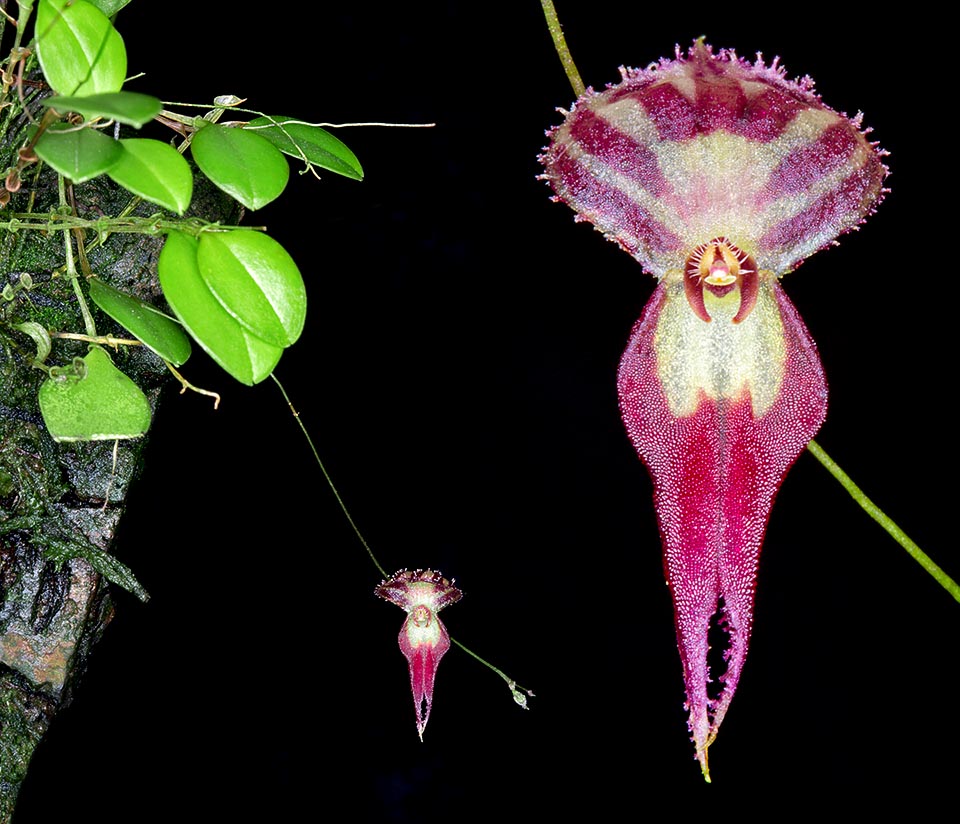Family : Orchidaceae

Text © Pietro Puccio

English translation by Mario Beltramini
The species is native to Peru where it grows on the trees of the pluvial forests at around 1800 m of altitude.
The etymology of the generic name has not been specified by the author, after some is the combination of the Greek substantives “λεπίς” (lepis) = scale and “άνθος” (anthos) = flower, with reference to the shape of the flower of many species. Others think it comes from “λέπος” (lepos) = bark and “άνθος” (flower) = flower, because the plants of the genus live on the bark of the trees. The species is honoured to its discoverer, Ernest Katler.
Common names: Katker’s lepanthes (English).
The Lepanthes katleri Luer (1991) is an epiphytic species od reduced dimensions with short rhizome and thin erect stems, 4-5 cm long, with at the apex one erect elliptic leaf with pointed apex, about 1,5 cm long, coriaceous. Racemose inflorescences, about 5 cm long, with filiform rachis bearing numerous flowers opening one at a time in succession for long time, with cream white dorsal sepal with dark purple radial bands, dark purple lateral sepals with cream white spot at the base and purple petals. Ovate dorsal sepal with long pointed apex and irregularly fimbriate margins, 8-9 mm long and 6-7 mm broad, lateral sepals merged for about 2/3 of the length, 10-11 mm long and 5-6 mm broad at the base, irregularly bilobed petals, about 1,5 mm broad and 0,8 mm long, and bilaminate labellum with ciliate margins, about 1 mm long.

Lepanthes katleri is a small orchid native to Peru where grows on the trees of the rain forests at around 1800 m of altitude. Cespitous epiphyte, has 1,5 cm coriaceous leaves and racemose inflorescences, about 5 cm long, with filiform rachis bearing several tiny flowers opening one at a time in succession for long time © Giuseppe Mazza
Mniature orchid with attractive blooming that continues for long time, requires a semi-shady exposition, intermediate temperatures, high ambient humidity and constant ventilation. It needs regular waterings and nebulizations utilizing rain water, demineralized or by reverse osmosis. It can be mounted on branches, pieces of bark or rafts of cork or of roots of arborescent ferns with sphagnum at the base for maintaining the humidity, or cultivated in pots or baskets with draining and aerated compost formed by medium sliced bark fragments and sphagnum with possible addition of inerts to improve the drainage. Transplants and repottings are to be done at the vegetative restart.
The species is reported in the appendix II of CITES (species whose trade is internationally ruled).
→ For general notions about ORCHIDACEAE please click here.
